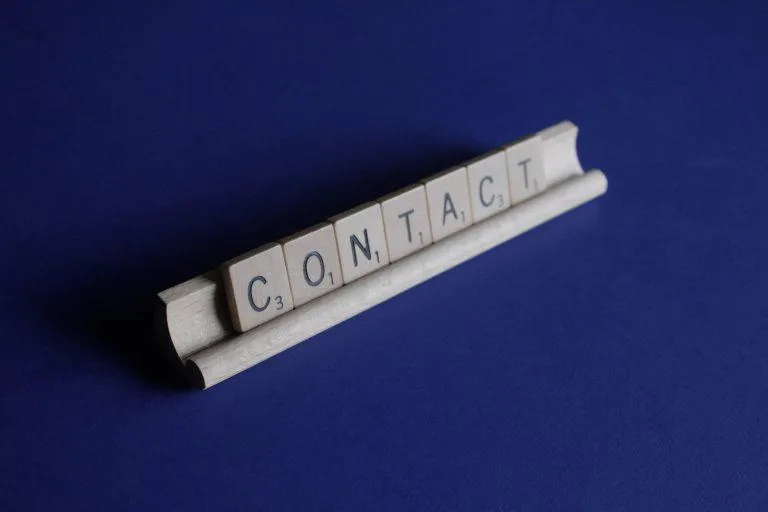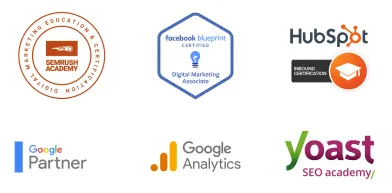TO LEARN IS TO GROW
Learning Center
We do our research and publish our results. Should probably call this the Growing Center.


Is There Ever a Time to Not Have a Contact Page on a Site?
When putting together a new site, folks are likely to spend the most time on the Home page. Which is OK— after all, this is the first page that visitors are going to see when they come to check out your site. First impressions and all that, right?
Did you know, however, that for many sites, the Contact page gets more page views than any other section? The good people over at Wordstream say this is true, particularly for contractors and agencies.
What this means is you should be putting in a little more thought into crafting your Contact page.
This very well might be the opportunity you have been waiting for to make a good impression, as visitors might be perusing your Contact Us Page while they are going through your site.
So even as they’re looking to get in touch with you, take this chance to show off a your brand personality. There are many ways you can accomplish this and further spruce up or otherwise maximize your Contact Page, and we’ll be discussing some of these ideas below.
But Is It OK to Not Have a Contact Page?
You can choose to not have a Contact page if that’s what you really want. Is it a great idea to not have one though?
We’d strongly advise against not having one, and here’s why we think so.
Visitors expect you to have a Contact page. You should make it easy for interested clients to find you, get in touch with you, and further interact with you.
A Contact page establishes trust. Building a relationship with your visitors (and by extension, your future clients) requires trust. Being forthcoming with your contact information, and how folks can reach you or find you makes for an excellent first step towards making that great first impression.
A Contact page is a great opportunity for good SEO. The right information and the right media on this page can make a big difference in terms of enhancing the overall user experience (UX). By improving your UX, you also improve your SEO.
Now, we understand that you might prefer not to get emails, or you might prefer your clients to mainly call you for appointments and consultations. But remember that you can configure your site so that you don’t get emails or visitors can call just one particular number.

The Importance of Contact Pages
Have you heard about the 15-second rule? Upon landing on your website, it only takes fifteen seconds for visitors to decide whether they’re bouncing out of there (for whatever reason) or if they’ll be further engaging with you.
Your site’s Contact Page is the first step towards nurturing a relationship with your visitors. After all, they’re interested enough to look up how to get in touch with you, so use this opportunity to volunteer that information. Perhaps even ask them to fill up a simple form while we’re at it.
Rather than just having a standard, garden-variety Contact page, make good use of design, branding, and content so you can encourage a better conversation or collaboration with your visitors.
With that in mind, remember that your Contact Page should convey or communicate value. There are no hard or set rules with regards to what you can or cannot put in your own Contact Page, but as long as you’re very much on-brand and you make it easy for visitors to reach you, then you should be fine.
Some Contact Page Best Practices
That said, some Contact pages are better than others. More specifically, some website owners have put quite a bit more effort and creativity in putting together a “Contact Us” section for their visitors. Hubspot has done a pretty good job at providing a good number of these for you to draw inspiration from.
So, what are some of the things you should consider putting into your Contact page to make it that much better?
A contact form might be standard for most websites, but you don’t have to have one if you so choose. Having a contact form, however, makes it easier for you to get your visitors’ basic info. If you must have one, ask for just the basics: name, email address, and a brief message should be alright. The more fields you have, i.e. the more info you’re asking for, the greater the chances of turning off your visitors.
Your contact information. You should be able to give your visitors an alternative method of getting in touch with you. Your office address, landline number, mobile number, email address(es), should do just fine. Let folks know when the best time would be to reach you and give them an idea of how soon you might be responding back.
Links to your social media channels and pages. Particularly helpful if you do have an active presence on, say, Facebook, Twitter, Instagram, or other online networks.
An interactive map is particularly useful especially if you’d prefer to have your guests visit your office for appointments or consultations. Include info on how to get to your office, as well as parking information, instructions on what to punch into GPS or Waze, office hours, and multiple branches, if you have any.
Even more contact info— only if it’s relevant to your business, and if you actually do get inquiries or interactions from it. You can choose to include your Skype, Viber, or other messaging apps if you think you need them up there.
Again, it’s totally up to you to decide what to include (and what not to include) in your Contact page. Some brands and businesses may decide to put in a live chat interface, or perhaps an FAQ section that links to other pages within the site, or maybe even a more extensive knowledge base.
A Final Word About Contact Pages
A well-crafted contact page for your website ultimately helps you nurture new business. They’re great for building trust, they’re helpful to your visitors, and they’re great for SEO.
So, to revisit our original question: is there ever a time to not have a Contact page on a site?
Unless you have a crucially creative idea, and the presence of a Contact page might diminish that experience somewhat, we’ll have to say that you should have a Contact page on your site and that you should put a little more thought into crafting one to be more in line with your brand and business.
Your Contact page can be configured however way you wish, you can put in any information or media you believe to be helpful for your visitors. In so doing, you can control the way visitors reach you— whether by disabling email, going with a specific phone number, or having them respond to a particular call-to-action.
Built for Growth. Backed by 25 Years of Trust.
For over two decades, LOJO has been a trusted partner to hundreds of businesses just like yours. Whether working directly with owners, managers, teams, or boards of directors, our goal remains the same: to be a reliable and results-driven asset to your business.
Over the years, we’ve carefully built a team of experts—each selected for their unique skills, strengths, and personalities. Our clients choose LOJO because they know we genuinely care about their success.
And after 25 years of helping businesses grow, we’re more committed than ever.



Built for Growth. Backed by 25 Years of Trust.
For over two decades, LOJO has been a trusted partner to hundreds of businesses just like yours. Whether working directly with owners, managers, teams, or boards of directors, our goal remains the same: to be a reliable and results-driven asset to your business.
Over the years, we’ve carefully built a team of experts—each selected for their unique skills, strengths, and personalities. Our clients choose LOJO because they know we genuinely care about their success.
And after 25 years of helping businesses grow, we’re more committed than ever.




Matthew Rogers, President
iProspect Check
After spending several months reviewing multiple proposals from several different companies we engaged LOJO to develop a new website that represents our company effectively. We worked initially with Stephen Platte who helped create the scope of the project. Stephen was knowledgeable and always followed up with me on time and as promised.
He "closed the deal" for LOJO with his professionalism, service orientation and easy going approach. Once we signed the contract we were introduced to Jay Kelly who would be the creative lead for LOJO. This was the most challenging part of the project for my company, as there was no shortage of ideas from our side. Jay managed the project flawlessly, and once we had all agreed to the design, Jay introduced us to Eric.
Eric Lay is one of the founders of LOJO. Eric took the design we had developed and brought it to life. We delivered content as quickly as he requested it. Eric kept the project on task and we responded by exceeding every deadline for content. In turn, once provided, literally not a day went by that Eric didn't add the content and take the next step. In just a few weeks we launched our new website. Eric is a pleasure to work with.
His positive attitude and consultative approach really enhanced the experience and made a big difference for us in the outcome of our project. We would welcome you to visit our website to take a look at the quality work of LOJO. We are very pleased with LOJO and look forward to working with them in the future as we pursue an aggressive SEO strategy."
After spending several months reviewing multiple proposals from several different companies we engaged LOJO to develop a new website that represents our company effectively. We worked initially with Stephen Platte who helped create the scope of the project. Stephen was knowledgeable and always followed up with me on time and as promised.
He "closed the deal" for LOJO with his professionalism, service orientation and easy going approach. Once we signed the contract we were introduced to Jay Kelly who would be the creative lead for LOJO. This was the most challenging part of the project for my company, as there was no shortage of ideas from our side. Jay managed the project flawlessly, and once we had all agreed to the design, Jay introduced us to Eric.
Eric Lay is one of the founders of LOJO. Eric took the design we had developed and brought it to life. We delivered content as quickly as he requested it. Eric kept the project on task and we responded by exceeding every deadline for content. In turn, once provided, literally not a day went by that Eric didn't add the content and take the next step. In just a few weeks we launched our new website. Eric is a pleasure to work with.
His positive attitude and consultative approach really enhanced the experience and made a big difference for us in the outcome of our project. We would welcome you to visit our website to take a look at the quality work of LOJO. We are very pleased with LOJO and look forward to working with them in the future as we pursue an aggressive SEO strategy."

Matthew Rogers, President
iProspect Check
The team at LOJO were wonderful to work with. They are well organized and very patient as we worked through our marketing strategy and developed a well thought out and clear action plan at a reasonable price. We will definitely be back for our future campaign needs."

Jon Crosby, Founder
Dazil

